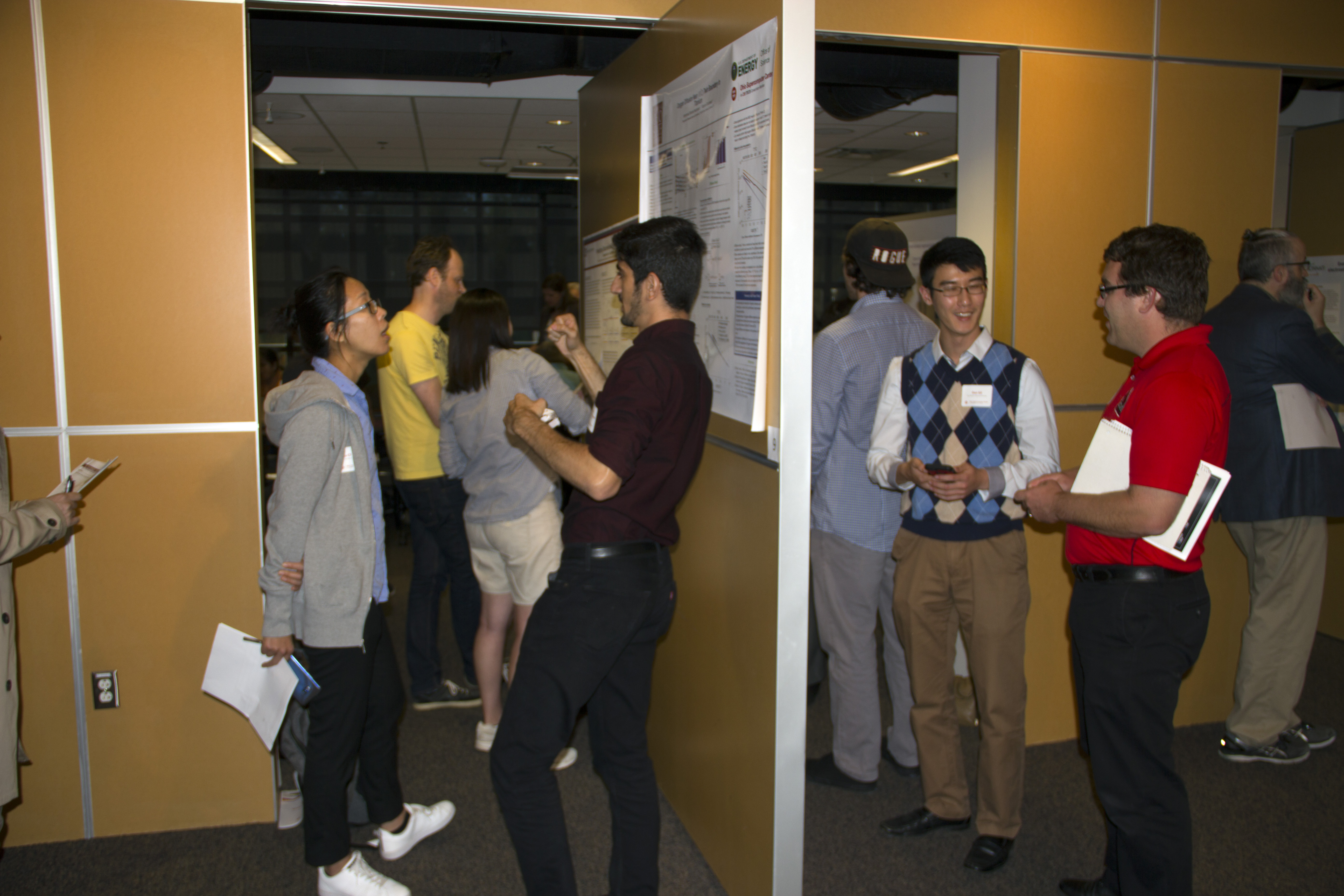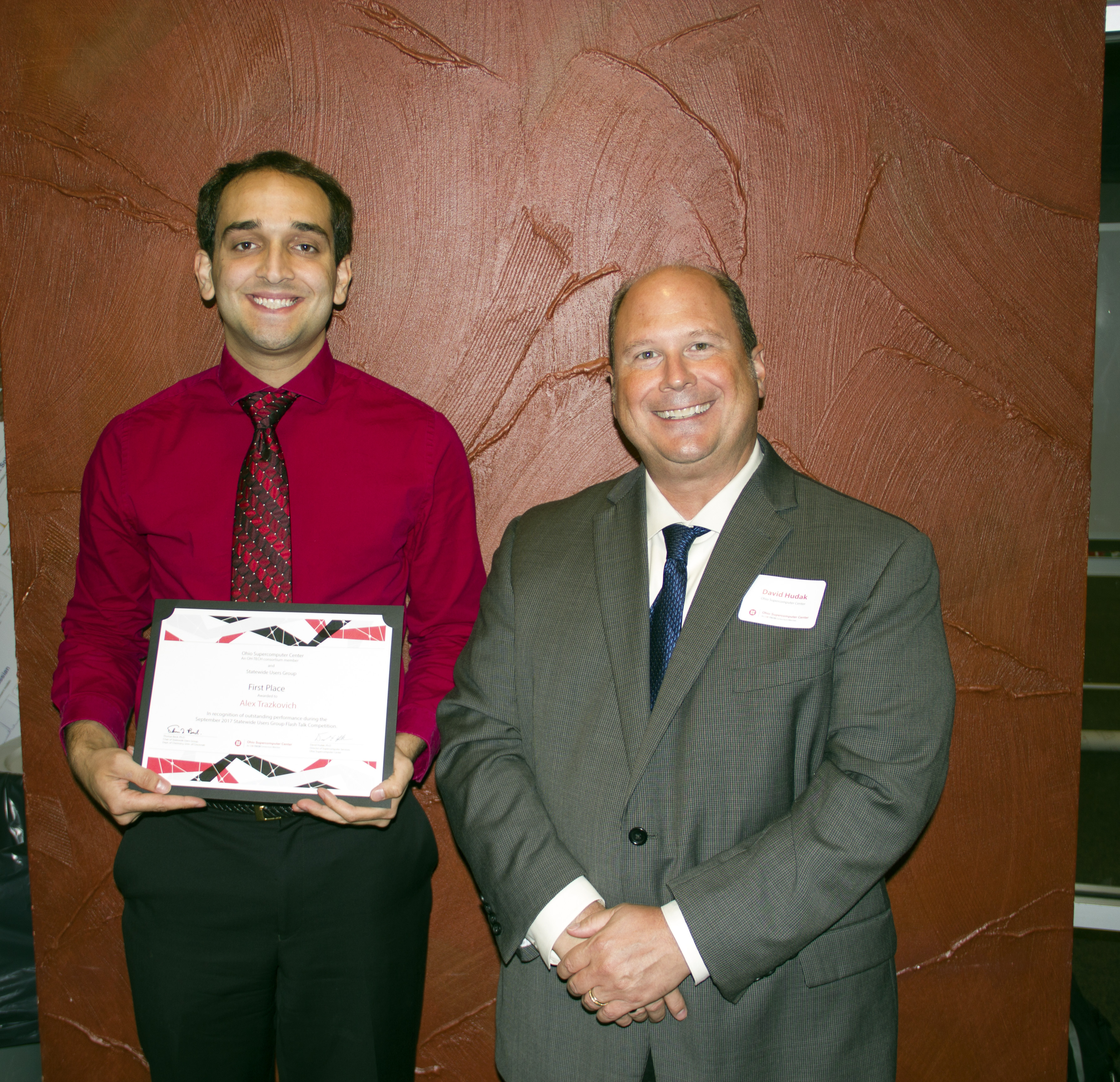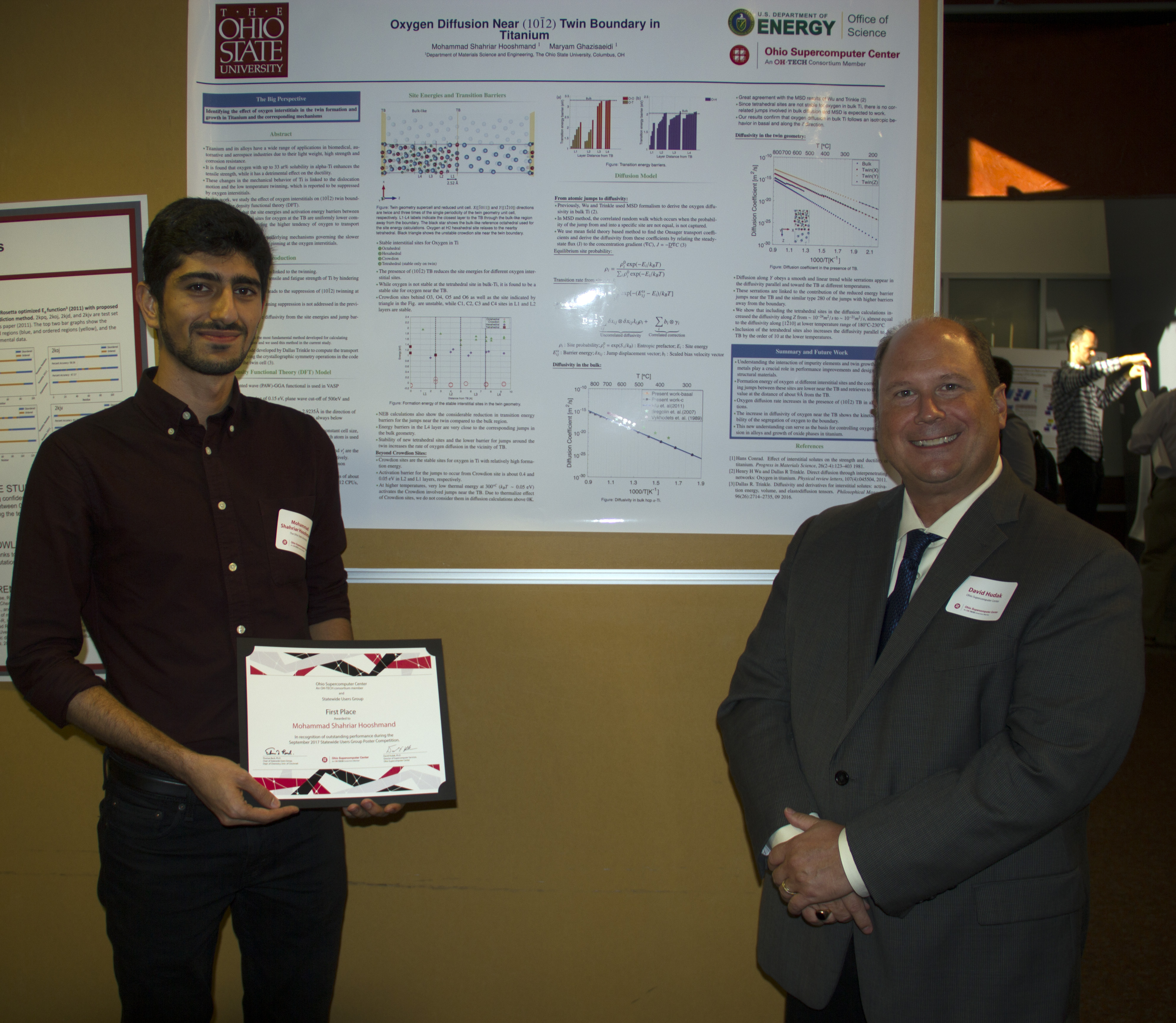In a week marked by a 30-year milestone, researchers who are breaking new ground came face to face Thursday with the computational experts helping them explore uncharted territory.
A day after the Ohio Supercomputer Center celebrated its 30th anniversary jointly with the Ohio Academic Recources Network (OARnet), the Center held its Statewide Users Group (SUG) Autumn Conference. SUG is a volunteer group composed of the scientists and engineers who provide OSC’s leadership with program and policy advice and direction to ensure a productive environment for research.

Wednesday’s 30th Anniversary celebration at The Ohio State University’s Fawcett Center brought members of OSC and OARnet together with members of their collective stakeholder communities.
“This SUG conference meshed nicely with (Wednesday’s) 30th Anniversary Celebration,” said Brian Guilfoos, HPC client services manager at OSC. “We got very nice comments from those who were at both. The SUG meeting went really well. We had a great turnout and got good feedback from faculty, so it was a very successful conference overall.”
About 100 attendees gathered at the Ohio Technology Consortium building for SUG, which featured a keynote address from Bryan C. Carstens, Ph.D., associate professor and vice chair of the Department of Evolution, Ecology and Organismal Biology at Ohio State. Participants presented 25 posters and 12 flash talks as part of the conference, with winners receiving 5,000 resource units of time on OSC systems while runners-up gained 2,500 resource units.
“The research being displayed is very interesting,” Guilfoos said. “The SUG meeting is a wonderful opportunity to see what people are doing with the resources and to better understand the achievements being with our services.”
Carstens is a longtime client of OSC. His keynote discussion presented his research into the protection of biodiversity. His presentation discussed his thesis that publicly accessible databases contain millions of data points that are relevant to the discovery and protection of biodiversity, but are currently underutilized.
“Despite millions of data points, few large-scale global analyses have been attempted because the synthesis of results across the thousands of research studies that collected these data, each using different methods and forms of analysis, is a daunting and time-consuming task,” Carstens said. “My lab proceeds by repurposing existing data using automated data analysis on processor nodes hosted by the Ohio Supercomputer Center.”

Using software that has largely been developed by lab postdoctoral researcher Tara Pelletier, Carstens presented results from several pilot studies. In terms of the number of species and the taxonomic breadth of these species, the analyses presented by Carstens are some of the largest of their kind to date. They suggest that information contained within existing biodiversity data can be extracted via parallel analyses and predictive machine learning approaches.
Flash talk and poster competitions followed Carstens’ address.
Alex Trazkovich, an Ohio State student, won the flash talk competition for his presentation “Effects of Copolymer Sequence on Adsorption and Dynamics Near Nanoparticle Surfaces in Simulated Polymer Nanocomposites.” R. Keith Slotkin, also a student at Ohio State, was the runner-up for his flash talk titled “Bioinformatics: From Reference Genomes to Individuals using Existing Datasets.”
Mohammad Shahriar Hooshmand, another Ohio State student, won the poster competition for his project, titled “Oxygen Diffusion around (10-12) Twin Boundary in Ti.”

“This is the main project for my Ph.D., and winning this is really motivating for me to do the rest of the work ahead of my thesis,” said Hooshman, who has attended and competed at SUG three times. “I really like the atmosphere here because we can communicate about the experiences we’re having and know exactly what is going on with the systems we’re using all the time.”
There were two runners-up in the poster competition: Dan Gil, a student at Case Western Reserve University, whose project was titled, “The Solvophobic Effect,” and Lianshi Zhao, an Ohio State student, whose project was titled, “Large-scale Computation for Plasma Opacities.”
Flash Talk Participants:
- R. Keith Slotkin, The Ohio State University, Bioinformatics: From Reference Genomes to Individuals using Existing Datasets
- Andrew Eisenhart, University of Cincinnati, Functional Group Effect on Electrolyte Liquid Structure
- Cory Shain, The Ohio State University, Speech segmentation with a neural net model of working memory
- Melanie Aprahamian, The Ohio State University, Incorporation of Mass Spectrometry Covalent Labeling Experimental Data into Rosetta Scoring Function
- Yuxi Cheng, The Ohio State University, Journal Information Extractor –SW Model
- Masood Delfarah, The Ohio State University, Cochannel Speech Separation in Reverberant Conditions
- Yichao Li, Ohio University, Reverse engineering of the human genome: predicting protein-DNA interactions across multiple cell types
- Kuan-Hsuan Shen, The Ohio State University, Morphology Effects on Diffusion of Selective Penetrants in Diblock Copolymers from Molecular Dynamics Simulations
- Alex Trazkovich, The Ohio State University, Effects of Copolymer Sequence on Adsorption and Dynamics Near Nanoparticle Surfaces in Simulated Polymer Nanocomposites
- Justin Seffernick, The Ohio State University, Modeling Surface Induced Dissociation to Improve Protein-Protein Docking
- Maximillian Westphal, The Ohio State University, Reducing irradiation of normal tissue with alternative X-rays sources and nanoparticles: Monte Carlo simulations
- Xuchun Yang, Bowling Green State University, Automatic Rhodopsin Modeling for High- Throughput Computational Photobiology
Poster Participants:
- Sajjad Afroosheh, Bowling Green State University, Modeling Surface Enhanced Raman Spectroscopy with Implicit and Explicit Solvents
- Nick Barron, Cleveland State University, Reconciling Linear Measurements of Fractal Cloud Structures
- William Calabrase | Cleveland State University, What Determines the Shape of a Cloud?
- Carrie Doyle, University of Cincinnati, Examination of the mulitpole decomposition of electrostatic potential in the single-ion solvation process
- Justin Flaherty, Cleveland State University, Characterizing the turbulent Structure of the Atmospheric Boundary Layer Using Large Eddy Simulations
- Daniel Gavazzi, Kent State University, Thermodynamic and kinetic representations of cooperative allosteric binding in calmodulin
- Dan Gil, Case Western Reserve University, The Solvophobic Effect
- Khalida Hendricks, The Ohio State University, Searching for Supersymmetry at the Large Hadron Collider
- Mohammad Shahriar Hooshmand, The Ohio State University, Oxygen Diffusion around (10-12) Twin Boundary in Ti
- Stephanie Kim, The Ohio State University, Predicting Disordered Regions of Proteins
- Minkyu Kim, The Ohio State University, First-Principles Kinetic Monte Carlo Simulation of CO Oxidation on PdO(101)
- Aneer Lamichhane, Bowling Green State University, Computational Study of Lattice Dynamics of Defects in ZnO
- Carlyn LaRosa, The Ohio State University, Dislocation-phase boundary interactions in Ni and fcc Co
- Yichao Li, Ohio University, Reverse engineering of the human genome: predicting protein-DNA interactions across multiple cell types
- Tuanan Lourenço, Fluminense Federal University, Local environment structure and dynamics of CO2 in the related ionic liquids
- Dong-Yeop Na, The Ohio State University, Finite Element based Particle-in-Cell Simulations of Micromachined Plasma Beam Devices
- Camilo Rey, The Ohio State University, Using Artificial Neural Networks to model evaporation and CO2 fluxes in a coastal reef
- Adriaan Riet, Case Western Reserve University, MD Simulation of Diffusion in MgO
- Sydnee Roese, Miami University, Parameterizing MOSCED with Electronic Structure Calculations to Predict Vapor-Liquid Equilibrium
- Tomas Rojas Solorzan, Ohio University, Point defects and the electronic structure of the antiferromagnetic phases of CrN
- Talant Ruzmetov, Kent State University, Binding thermodynamics and kinetics of an Intrinsically Disordered Protein
- Vladimir Sworski, Cleveland State University, How High Does the Lower Atmosphere Go?
- Xinjie Tong, The Ohio State University, Development of innovative ventilation systems of manure-belt layer houses for improved indoor environment
- Qiang Zhang, The Ohio State University, CO and Phosphate Poisoning Effects on FeN/C and CNx: A First-principles Study
- Lianshui Zhao, The Ohio State University, Large-scale Computation for Plasma Opacities
The Ohio Supercomputer Center (OSC), a member of the Ohio Technology Consortium of the Ohio Department of Higher Education, addresses the rising computational demands of academic and industrial research communities by providing a robust shared infrastructure and proven expertise in advanced modeling, simulation and analysis. OSC empowers scientists with the vital resources essential to make extraordinary discoveries and innovations, partners with businesses and industry to leverage computational science as a competitive force in the global knowledge economy, and leads efforts to equip the workforce with the key technology skills required to secure 21st century jobs. For more, visit www.osc.edu.